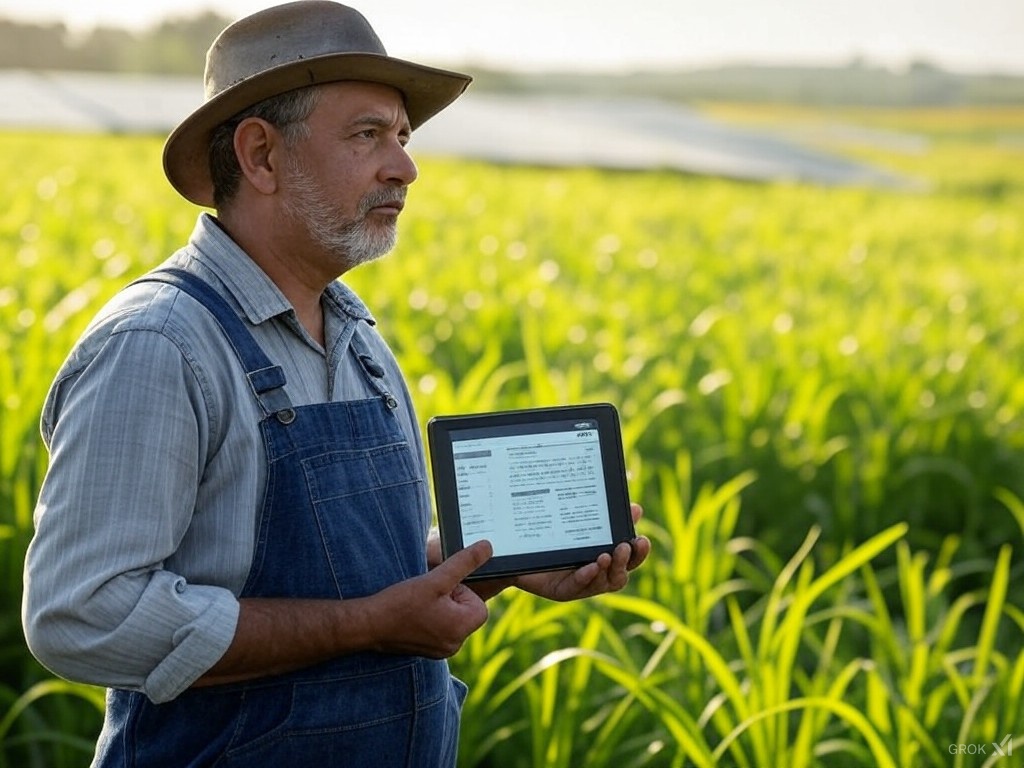
Picture this: You’re a soybean farmer in Iowa, staring at fields that have been in your family for generations. The world wants you to be greener, but your margins are tighter than ever. What if sustainability could become your newest revenue stream? Enter carbon credit farming – and the ERP tools turning climate action into cold, hard profit.
Carbon credits aren’t just for tech giants anymore. With corporations scrambling to offset emissions, the voluntary carbon market could hit $50 billion by 2030 according to McKinsey. For Midwest soybean growers, this means:
But here’s the catch: Tracking these practices requires surgical precision. That’s where ERP solutions for sustainable soybean farming transform from nice-to-have tech into your financial lifeline.
Modern farm ERP platforms like those revolutionizing cotton farming in the Southern Plains now offer carbon-specific modules. Here’s how they work for soy operations:
Gone are the days of handwritten logs. ERP systems:
“It’s like having a USDA inspector living in your iPad,” says Dan Wheeler, a Nebraska farmer earning $27/acre in credits.
Advanced ERP tools calculate your sequestration potential using:
This precision prevents the guesswork that left many early adopters underpaid. As seen in IoT-driven American farming landscapes, live data streams are making audits as routine as checking the weather.
Top platforms now integrate with carbon exchanges like Nori and Regrow. Your ERP becomes:

Take the Johnson Family Farm in central Illinois:
Before ERP:
After Implementing Agricultural ERP:
“We’re now earning more from carbon than our poorest soybean fields,” notes farm manager Sarah Johnson.
While carbon credits grab headlines, ERP systems deliver layered benefits familiar to those using livestock ERP software in Texas:
The same data optimizing carbon sales can:
As seen in grain farmers managing futures markets, ERP platforms now incorporate:
With carbon contracts often spanning 10+ years, ERP systems help:
Farmers tell us their top concerns about carbon programs:
1. “Will this lock me into unprofitable practices?”
Modern ERP solutions allow dynamic scenario planning. Test how switching from rye to clover cover crops affects both credits and soybean yields.
2. “What if prices crash?”
Platforms like those aiding Basmati rice supply chains now offer forward contracting options and price floor guarantees.
3. “I’m not tech-savvy enough!”
Today’s farm ERP interfaces rival smartphone simplicity. As one Oklahoma rancher using organic agriculture ERP tools joked: “If my grandkid can play Roblox, I can manage carbon credits.”
ERP systems are not only revolutionizing carbon credit farming but also playing a key role in supporting the circular economy in agriculture. By tracking resource usage, minimizing waste, and optimizing land utilization, these tools help farmers create self-sustaining agricultural ecosystems. From composting organic waste back into nutrient-rich soil to ensuring precise input applications, ERP solutions are transforming farms into efficient, closed-loop systems that align with regenerative agriculture principles.
As carbon markets mature, ERP innovations are emerging that even Silicon Valley would envy:
But here’s the real kicker: The same system monetizing your sustainability today could soon track water rights trading or biodiversity credits. As the EPA tightens regulations, early adopters using tools like those in the Mississippi Delta’s sustainable farming projects are positioned to lead.
Carbon credits in farming are a way to incentivize farmers to adopt sustainable practices that reduce or sequester carbon emissions. By implementing methods like agroforestry, no-till farming, and crop rotation, farmers can capture carbon from the atmosphere and generate carbon credits, which can be sold to companies or individuals looking to offset their emissions.
Yes, you can make money from carbon farming by selling carbon credits. Farmers who implement practices that capture or reduce carbon emissions can earn credits based on the amount of carbon sequestered. These credits can then be sold on carbon markets to companies and organizations that need to offset their own carbon footprints.
The profitability of a carbon credit can vary depending on factors like the carbon credit market, the type of farming practices implemented, and the region. Prices for carbon credits typically range from a few dollars to over $10 per ton of CO2 sequestered. While carbon farming can be profitable, it is often more of a long-term investment than an immediate source of income.
Carbon farming is a method of farming that focuses on increasing the capture and storage of carbon in the soil. This can include practices like planting cover crops, reducing tillage, integrating livestock with crop production, and using agroforestry techniques. The goal is to sequester more carbon in the soil than is emitted, contributing to mitigating climate change while also improving soil health and farm productivity.
Find Agriflow in other countries of Africa